Wednesday to Sunday 10am to 5pm or by appointment
Sizes quoted are of artworks. Where enquiries of prices are made on the gallery, the work is subject to availability and the price to change._Oil on canvas_610x760mm.jpg)
_Oil on canvas_505x1010mm.jpg)
_Oil on canvas_390x370mm.jpg)
_Oil and tempera on board_310x560mm.jpg)
_Gouache and tempera on cotton laid on paper_220x350mm.jpg)
_Oil and cotton laid on paper_410x590mm.jpg)
_Gouache and tempera on cotton_170x160mm.jpg)
_Gouache and tempera on board_215x550mm.jpg)
_Oil on canvas_660x510mm.jpg)
_Oil on canvas_300x355mm.jpg)
_Oil on board_443x695mm.jpg)
_Oil on canvas_480x660mm.jpg)
_760x915mm.jpg)

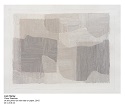
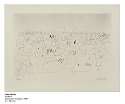





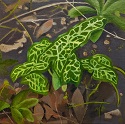
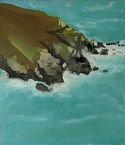

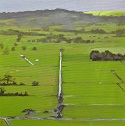
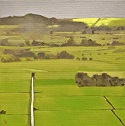
 oil on prepared paper 16.5 x 13.5cm.jpg)
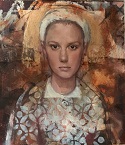
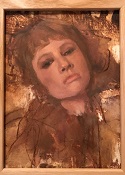
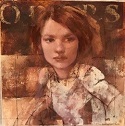
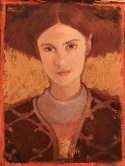
Outside works retained for the summer
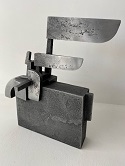

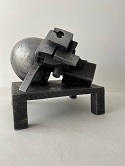

Liam Hanley lives in Kentish Town, but his heart belongs to two square miles of undulating fields near Royston in Hertfordshire, which he paints with unending zest and invention. Born in Kensington in 1933, he is the only child of the radical novelist James Hanley, who ran away to sea at the age of 12 and became a friend of such literary figures as TE Lawrence, EM Forster and Henry Green. John Cowper Powys was young Liam’s godfather, and the family lived for many years in Montgomeryshire. Liam inherited his artistic leanings from his mother, herself a painter, collage-maker and writer. It was she, he insists, who taught him to look. After studying at Wrekin College in Shropshire, Hanley did his National Service in the Royal Marines, in Malta, Libya and Egypt. He then worked as a newspaper and TV journalist for 30 years, but began to grow seriously interested in painting, taking evening classes at the Central School of Art in the late 1950s. In those years he travelled in his spare time and painted whatever caught his eye: he was ‘like a tramp with a bank balance’ (in his own evocative phrase), on the road whenever possible. But Wales remained his main point of reference and many pictures were of the landscape around his old home. His parents sold the Welsh house in 1963, and Liam was bereft. As a painter he felt rootless until he discovered Royston, a stretch of interesting hollows and windswept edges shaped by the Great Surge of the Ice Age.
Hanley took early retirement from ITN to work full-time as a painter. He held his first one-man show back in 1962 at the Royal Society of Arts, and has subsequently exhibited regularly in London, also in Newcastle, Chichester and Kendal. His work, which at one point he wanted to be as accurate a record of the passing seasons as the nature essays of Richard Jefferies, has grown more abstract over the years. On occasion geometrical (like Mondrian or Victor Pasmore), it is still lyrical and Romantic, with its high viewpoints and luminous tones. There is also a certain affinity with those American realist painters of the 1950s such as Grant Wood, Thomas Hart Benton, and the fields and big skies of John Rogers Cox.
The early watercolours with their linear Celtic echoes of David Jones (such as Clusters, 1966), developed into the more assured surge and shimmer of the bean-field paintings of the 1980s, culminating in that marvellous celebration of pattern in nature, Misty Landscape, 1987. Later the imagery can be increasingly emblematic, but Hanley never loses sight of the inspiration derived from direct observation, despite the pronounced impulse towards musical structure, as well as a relish for the decorative. His paintings are full of beautiful shapes, not stories. He is a formal painter with a powerful understanding of place. He writes: ‘I look for landscape that has an echo. Places and shapes have always travelled with us, the stuff of dreams. To find the right landscape is to realise the dream.’
Self–taught artist
1962-1988 Scriptwriter, ITN News
1962 Royal Society of Arts
1964 Cavendish Gallery, London
1965 Opus Gallery, London
1966 Mermaid Theatre, London
1967, 69 Heals – Mansard Art Gallery, London
1968, 81 Stone Gallery, Newcastle
1973 David Paul Gallery, Chichester
1974, 76, 79, 82 Thackeray Gallery, London
1984, 86, 88 Phoenix Gallery, Lavenham
1989, 91 Phoenix Gallery, London
1985 Abbot Hall Art Gallery, Kendal
1987 Beldesign, Cambridge
1991 Broughton House Gallery
1991, 93 Bronwen White, New Orleans
1994 Alresford Gallery, nr Winchester
1994, 99, 02, 05, 07, 10 Beardsmore Gallery, London
2006 Highgate Gallery, London
2014 Crane Kalman Gallery, London
2016 Chappel Galleries, Essex - Liam Hanley: Tracing the Pattern
c.1960’s
AIA Gallery, London
Tib Lane Gallery, Manchester
Redfern Gallery, London, Summer Shows;
Stroud Festival – Redfern Painters
1964 - 66 St Pancras Festivals, London
1967 - 70 Camden Festivals, London
1967, 69 Camden Collection, London
c.1970’s Piccadilly Gallery, London, Summer Shows
1971 Mermaid Theatre, London
1971 - 2000 Royal Academy, London Summer Exhibitions, frequently selected
1973 Upper Street Gallery, Competition, London
1979 Critics’ Choice, London
1980 New Grafton Gallery, London
c.1980’s
Sainsbury’s Images for Today
Gallery Valerie, Brompton Road, London
Bury St Edmunds Art Gallery, Suffolk
1982, 83 Graves Art Gallery, Sheffield (prize winner ’82)
1986
Thackeray Gallery, London
Beldesign, Cambridge
1987/88 Phoenix Gallery, Kingston/Pimlico; Highgate, London
1993 - 96 Alresford Gallery, near Winchester
1994 Bank Street Gallery, Sevenoaks
1994, 95 20th Century British Art Fair, RCA, Beardsmore Gallery, London
1994 - 2002 London Contemporary Art Fairs, Beardsmore Gallery, frequently selected
1995 ‘Looking Up, Looking Down’, Beardsmore Gallery
1996
‘Seafairing’ New Ashgate Gallery, Farnham
Endangered Species, Christies
1997
City of London Art Fair, Beardsmore Gallery
Four Group, Beardsmore Gallery
1998 Chelsea Art Fair
1999 The Edge of the Land, with Jason Hicklin, Beardsmore Gallery
2001 Leighton House, London
2010 Winter Exhibition, Beardsmore Gallery
National Library of Wales
Graves Gallery, Sheffield
Abbot Hall Gallery, Kendal
John Player Collections, Nottingham
Primavera, Cambridge
Local authorities of: Leicester Educations Committee; East Riding, Yorkshire; W Riding, Yorkshire;
Lancashire; Sussex; Camden; Shropshire
Paintings in hospitals
Illustrations for ‘The Face of Winter’ by James Hanley, limited edition of 99 copies 1964
Shadowgraph Play for Theatre of Puppets, ICA, 1970